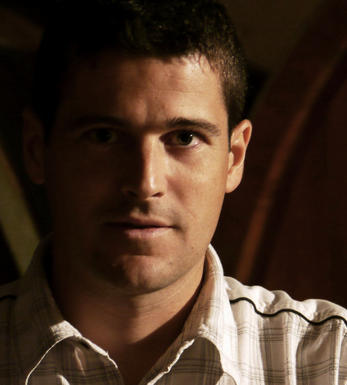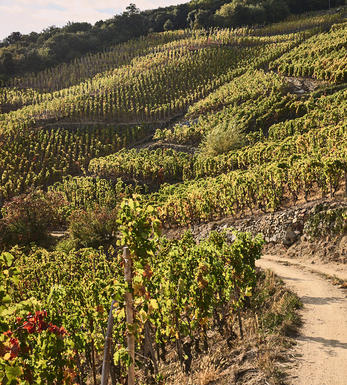
2009 Condrieu, Cuvée De Chery, Domaine Remi et Robert Niero

Critics reviews
(Jancis Robinson MW - jancisrobinson.com)
About this WINE

Domaine Robert Niero
Robert Niero spent 13 years working in a bank before marrying the late Jean Pinchon`s daughter and thus inheriting holdings in some of Condrieu's most illustrious vineyards. He made further purchases and now has just under 6 hectares of vineyards. .
The Syrah grape variety, from which Côte Rôtie is made, is cultivated in the community of Ampuis in La Vallière (0.60ha) and Semons in Coteau de Bassenon (1.20ha).
Since 1994 Robert has vinified separately the Viogner grapes from his holdings in the Coteau de Chery and La Roncharde vineyards (the latter goes into Condrieu Les Ravines). The average vine age in the Coteau de Chery is high (30-50 years old) and the wines are powerful, well-structured and often exotically rich.
His son Rémi joined the domain in 2004.

Condrieu
Until you’ve tasted Viognier grown in Condrieu, you’ve never truly experienced the grape’s majesty. In the same way that winemakers the world over have planted Pinot Noir in the hope of emulating red Burgundy, so too they’ve planted Viognier in the hope of achieving the unique balance of exotic perfume, weight and freshness for which Condrieu is famed. Few succeed. Traditionally, winemakers here have used relatively inert, large wooden vessels vinification and élevage are in relatively inert, large, wooden vessels, but the new generation of winemakers are increasingly interested in the qualities of new oak.
Plantings have expanded beyond the core of the AOC, around the village itself, to 140 hectares from the low of eight hectares in the 1960s. The vineyards pick up where Côte-Rôtie leaves off, the slope continues, but the schist of the north begins to give way to a little more granite and a topsoil of decomposed mica. Today the appellation is characterised by energy and creativity, and demand for the wines from this diminutive region is soaring.

Viognier
A white grape variety originating in the Northern Rhône and which in the last ten years has been increasingly planted in the Southern Rhône and the Languedoc.
It is a poor-yielding grape that is notoriously fickle to grow, being susceptible to a whole gamut of pests and diseases. Crucially it must be picked at optimum ripeness - if harvested too early and under-ripe the resulting wine can be thin, dilute and unbalanced, while if picked too late then the wine will lack the grape's distinctive peach and honeysuckle aroma. It is most successfully grown in the tiny appellations of Château-Grillet and Condrieu where it thrives on the distinctive arzelle granite-rich soils. It is also grown in Côte Rôtie where it lends aromatic richness to the wines when blended with Syrah.
Viognier has been on the charge in the Southern Rhône and the Languedoc throughout the 1990s and is now a key component of many white Côtes du Rhône. In Languedoc and Rousillon it is increasingly being bottled unblended and with notable success with richly fragrant wines redolent of overripe apricots and peaches and selling at a fraction of the price of their Northern Rhône cousins.


Buying options
Add to wishlist
Description
The Cuvée de Chéry is indeed a lieu-dit, and recognised as one of the very best sites in Condrieu, its precipitous vineyards benefiting from a perfect south-east aspect and the famous granite soil profile. The wine has all the rich unctuous peaches and cream texture that one associates with fine Viognier but also, importantly, a seam of almost saline minerality which ensures freshness and balance at the finish.
wine at a glance
Delivery and quality guarantee